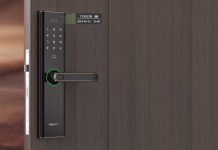RF coaxial connectors connect various radio frequency (RF) equipment, including antennas, radios, and other electronic devices. One of the most important factors when choosing an RF coaxial connector is its impedance, typically 50 ohms or 75 ohms. In this article, we’ll explore the differences between these two types of impedance and help you decide which is best suited for your application. If you want to learn more about coaxial connectors and their applications according to specific impedance, you can visit the link for the rf connector guide.
What is Impedance?
Impedance measures an electrical circuit’s resistance and reactance to the current flow. It is commonly expressed in ohms (Ω) and is a critical factor in the performance of RF coaxial connectors. In general, lower impedance values are better for transmitting high-frequency signals over long distances, while higher impedance values are better for transmitting low-frequency signals over shorter distances.
50 Ohm RF Coaxial Connectors
50-ohm RF coaxial connectors are commonly used in high-frequency applications, such as radio communications and wireless networking. They are designed to minimize signal loss and provide a stable connection over long distances. 50-ohm connectors are typically used with coaxial cables with a characteristic impedance of 50 ohms, which helps ensure optimal signal transmission.
One of the advantages of 50-ohm connectors is their wide availability. They are commonly used in various industries, including telecommunications, military, and aerospace. Additionally, many RF test and measurement instruments are equipped with 50-ohm connectors, making it easy to connect your equipment to these instruments.
75 Ohm RF Coaxial Connectors
75-ohm RF coaxial connectors are typically used in cable television and high-definition video applications. They are designed to provide a stable connection over shorter distances and are less prone to signal loss than 50-ohm connectors.
One of the key advantages of 75-ohm connectors is their superior performance with video signals. They are optimized for video transmission and provide a higher signal quality than 50-ohm connectors. Additionally, they are commonly used in consumer electronics, making them easy to find and purchase.
Which Impedance is Right for You?
The choice between 50 ohms and 75 ohms RF coaxial connectors ultimately depends on your specific application. If you’re working with high-frequency signals, such as those used in radio communications or wireless networking, 50-ohm connectors are likely the best choice. They provide a stable connection over long distances and are widely available in the industry.
On the other hand, if you’re working with video signals, such as those used in cable television or high-definition video, 75-ohm connectors are likely the better choice. They are optimized for video transmission and provide superior signal quality over shorter distances. However, you can get in-depth information from online websites as the product may vary depending upon the manufacturers or sellers.
Conclusion
In summary, when choosing an RF coaxial connector, it’s important to consider its impedance. 50-ohm connectors are best suited for high-frequency applications, while 75-ohm connectors are better for video applications. By understanding the differences between these two types of connectors, you can make an informed decision and ensure optimal performance for your application.









